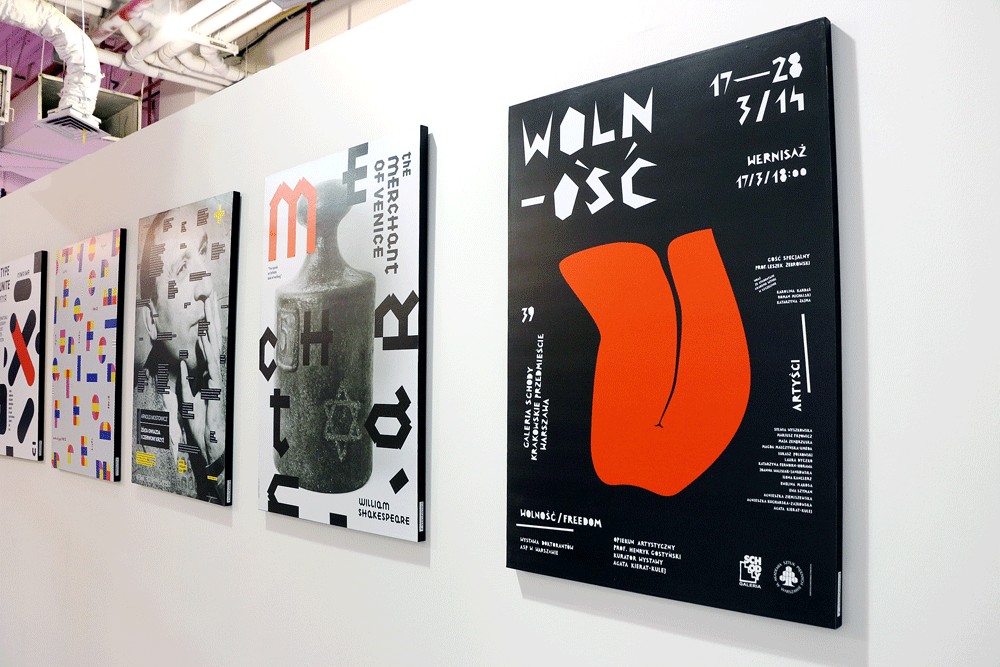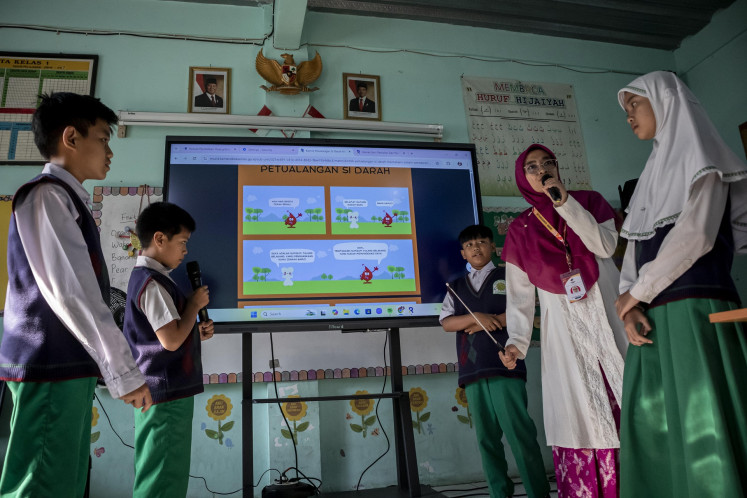Artist shows her take on poster design
Through her posters, Polish-Japanese artist Agnieszka Ziemiszewska takes people out of their surroundings and into something deeper.
Change text size
Gift Premium Articles
to Anyone
 Open interpretation: Polish-Japanese designer and curator Agnieszka Ziemiszewska’s poster art will be on display at the Summarecon Mall Serpong shopping center in Tangerang until Nov. 30. (Marcel Thee/-)
Open interpretation: Polish-Japanese designer and curator Agnieszka Ziemiszewska’s poster art will be on display at the Summarecon Mall Serpong shopping center in Tangerang until Nov. 30. (Marcel Thee/-)
T
hrough her posters, Polish-Japanese artist Agnieszka Ziemiszewska takes people out of their surroundings and into something deeper.
Ziemiszewska’s exhibited pieces at the Summarecon Mall Serpong shopping center in Tangerang capture the eye with their striking blend of colors and dynamic composition.
They jump out with a sense of compositional confidence that is as highly artistic as they are unique. Layers fall upon each other in a complex manner, creating a whirlwind of visuals that take a while to fully absorb, becoming impossible to ignore.
The much-respected graphic designer, academic teacher and curator is currently an adjunct professor at the Polish-Japanese Institute of Information Technology in Warsaw, where she heads the typography studio. She also keeps busy with Poster/Blog, an online blog devoted to poster art.
Ziemiszewska said in both her commissioned and social pieces, she found it important to give the viewer a possibility of his or her own interpretation, or evoke afterthoughts.
She has paid attention to Indonesia’s growing design scene, having done so for almost two years and even writing a book about it.
“The best word I can find to describe it is diversity. [...] Certainly, I believe that Indonesian design is progressive, open to new trends and yet respectful of traditions,” she said.
The artist completed her Ph.D at the School of Graphic Arts at the Academy of Fine Arts in Warsaw. Prior to that she studied at and graduated from the Academy of Fine Arts in Lodz.
Her current exhibition, which runs until Nov. 30, is part of Summarecon’s Pradita Institute’s Visual Communication Design (DKV) program that encourages budding local designers to understand how their work will fit into the landscape after they graduate, and the mechanism of the blossoming design industry.
The idea is that events like this will bring them closer to completing their studies not merely as fresh graduates, but as experienced graduates.
The head of Pradita’s DKV program, James Darmawan, refers to the country’s cultural attitude toward poster design — in which they are seen to have almost the same artistic value as, for instance, a painting — as one of the reasons why Ziemiszewska was invited to attend the exhibition.
“She is very experienced in curating art, including poster art [...] which is why we picked her,” said James, adding that Ziemiszewska also had the experience to thoroughly assess and educate students.
“We want our students to have an international-level education, because we understand that in these times, they need to be equipped with global and real-world knowledge that you can only get if you experience things first-hand,” he added, saying that the plan was to have a similar event with international guests once a year.
The event also involves the Worldwide Graphic Designers (WGD) center, which works to connect designers from all over the world in the hope of giving students another layer of experience.
The WGD is involved in the event’s program schedule, standardization and curation process.
WGD founder Irwan Harnoko has seen how the limitations of studying without real-world experience can be a hindrance to budding designers. His aim is to develop each student designers’ character and personality into a strength shaped through experience.
“Many young designers, all over the world, are passionate about their work, but many of them answer their calling by learning through an educational framework. Through this global knowledge sharing, these students will learn how to think, deliver ideas and manage their method in a different way from common design principals,” Irwan said.
“While aesthetic and harmony are still the most important elements, their individual intuitive desire will be their valued strength.”









